 Technology peripherals
Technology peripherals
 AI
AI
 AI algorithm discovers a new nanostructure, reducing research time from one month to six hours
AI algorithm discovers a new nanostructure, reducing research time from one month to six hours
AI algorithm discovers a new nanostructure, reducing research time from one month to six hours
AI has achieved a new achievement!
It only takes 6 hours to discover new nanostructures. Using traditional methods, it would take at least 1 month to complete this task.
This result was published in the Science sub-journal Advance.
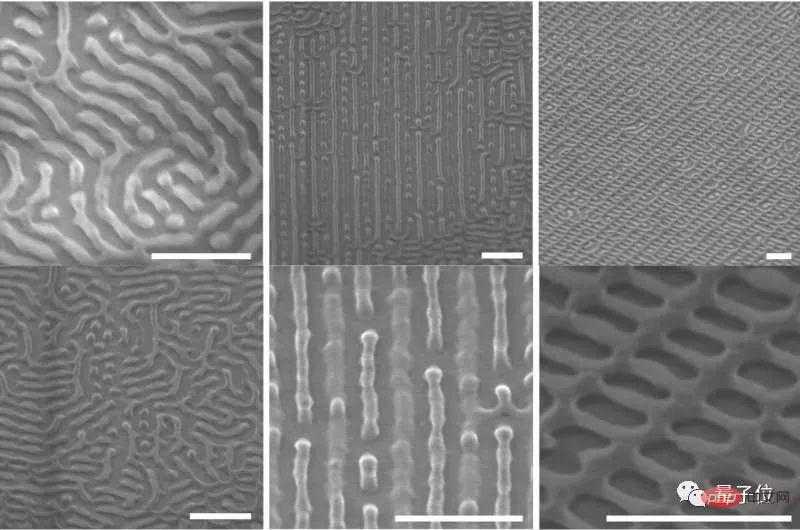
△ Scanning electron microscope image depicts new nanostructure discovered by AI
Experiment from U.S. Department of Energy (DOE) Brooke Black At Wen National Laboratory, researchers used AI-driven technology to discover three new nanostructures.
One of the structures is still a very rare "ladder" type.
They used an algorithm-driven framework called gpCAM for the entire process, which can independently define and execute all steps of the experiment.
After the CEO of a digital product start-up company read the paper, he boldly made some remarks to stimulate the popularity of ChatGPT:
I bet that in the next five years, AI will transform engineering and materials science. , pharmaceuticals, will dwarf ChatGPT’s influence.
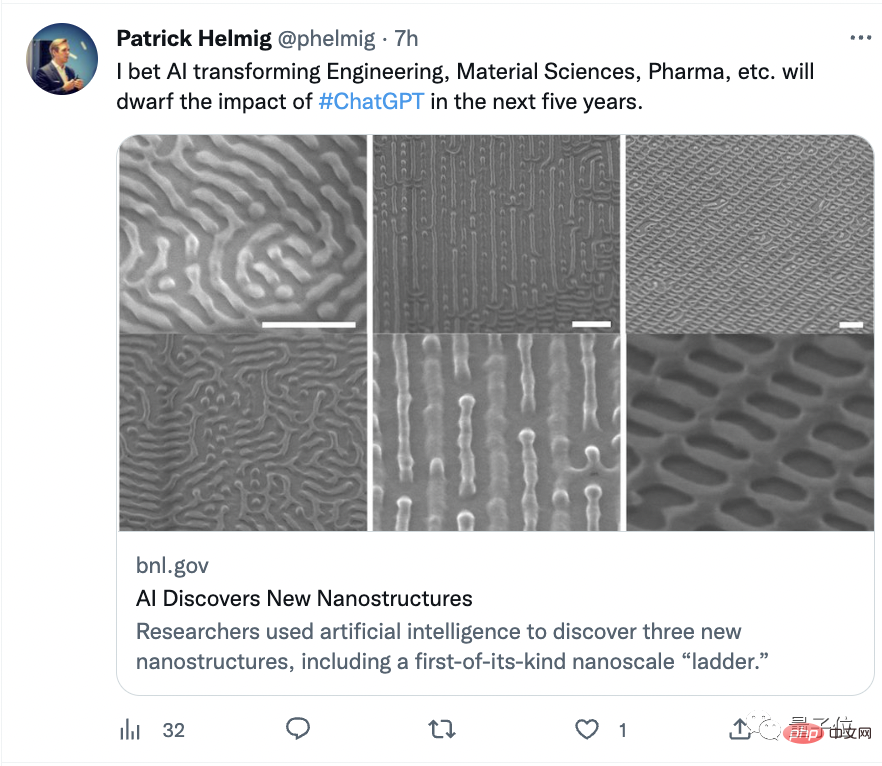
Discover three new nanostructures
Discover three new nanostructures, all through a process called self-assembly ) formed through the process.
Self-assembly refers to a technology in which basic structural units, such as molecules, nanomaterials, microns, etc., spontaneously form an ordered structure.
The structure formed is stable and the geometric appearance has certain rules.
The properties of self-assembling materials are small and rigorous Control, using this technique, enables smaller nanopatterns with improved resolution.
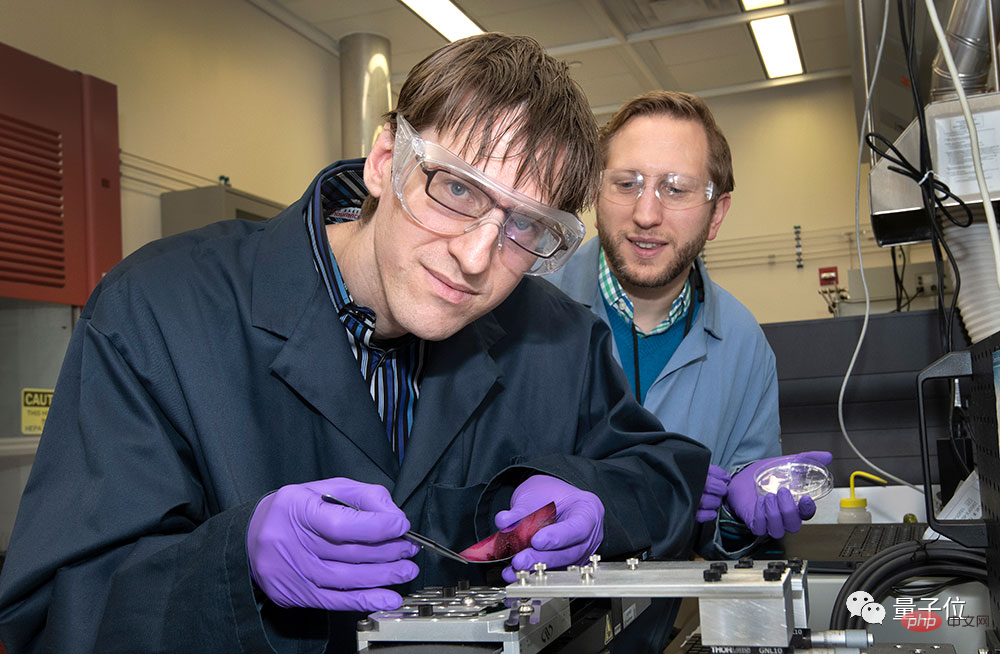 △Co-authors Kevin Yager (left) and Gregory Doerk (right).
△Co-authors Kevin Yager (left) and Gregory Doerk (right).
This sample was sent to NSLS-II for structural study using ultra-bright X-rays.
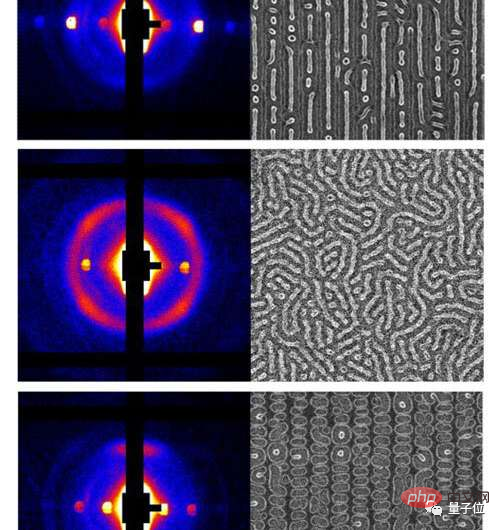
ΔX-ray scattering data (left) showing key areas of the sample with corresponding scanning electron microscopy image (right)
## When the #ray is run, gpCAM creates models of multiple different structures of a material without human intervention. gpCAM also needs to make measurements more insightful. Simply put, it uses AI algorithms to select which point to measure next, making each measurement more accurate.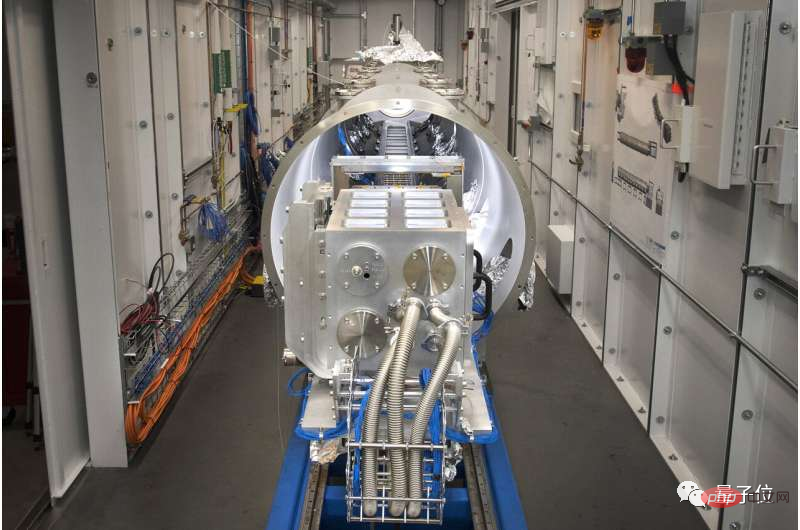
https://www.php.cn/link/8e5231f0eadafd174b670e838e42d97d
[2] https://www.science.org/doi/10.1126/sciadv.add3687[3]https://www.bnl.gov/newsroom/news.php?a=120993#:~:text=The artificial intelligence (AI)-,published today in Science Advances.The above is the detailed content of AI algorithm discovers a new nanostructure, reducing research time from one month to six hours. For more information, please follow other related articles on the PHP Chinese website!

Hot AI Tools

Undresser.AI Undress
AI-powered app for creating realistic nude photos

AI Clothes Remover
Online AI tool for removing clothes from photos.

Undress AI Tool
Undress images for free

Clothoff.io
AI clothes remover

Video Face Swap
Swap faces in any video effortlessly with our completely free AI face swap tool!

Hot Article

Hot Tools

Notepad++7.3.1
Easy-to-use and free code editor

SublimeText3 Chinese version
Chinese version, very easy to use

Zend Studio 13.0.1
Powerful PHP integrated development environment

Dreamweaver CS6
Visual web development tools

SublimeText3 Mac version
God-level code editing software (SublimeText3)

Hot Topics
 1387
1387
 52
52
 How to get logged in user information in WordPress for personalized results
Apr 19, 2025 pm 11:57 PM
How to get logged in user information in WordPress for personalized results
Apr 19, 2025 pm 11:57 PM
Recently, we showed you how to create a personalized experience for users by allowing users to save their favorite posts in a personalized library. You can take personalized results to another level by using their names in some places (i.e., welcome screens). Fortunately, WordPress makes it very easy to get information about logged in users. In this article, we will show you how to retrieve information related to the currently logged in user. We will use the get_currentuserinfo(); function. This can be used anywhere in the theme (header, footer, sidebar, page template, etc.). In order for it to work, the user must be logged in. So we need to use
 How to elegantly obtain entity class variable names to build database query conditions?
Apr 19, 2025 pm 11:42 PM
How to elegantly obtain entity class variable names to build database query conditions?
Apr 19, 2025 pm 11:42 PM
When using MyBatis-Plus or other ORM frameworks for database operations, it is often necessary to construct query conditions based on the attribute name of the entity class. If you manually every time...
 Java BigDecimal operation: How to accurately control the accuracy of calculation results?
Apr 19, 2025 pm 11:39 PM
Java BigDecimal operation: How to accurately control the accuracy of calculation results?
Apr 19, 2025 pm 11:39 PM
Java...
 How to solve the problem of username and password authentication failure when connecting to local EMQX using Eclipse Paho?
Apr 19, 2025 pm 04:54 PM
How to solve the problem of username and password authentication failure when connecting to local EMQX using Eclipse Paho?
Apr 19, 2025 pm 04:54 PM
How to solve the problem of username and password authentication failure when connecting to local EMQX using EclipsePaho's MqttAsyncClient? Using Java and Eclipse...
 How to properly configure apple-app-site-association file in pagoda nginx to avoid 404 errors?
Apr 19, 2025 pm 07:03 PM
How to properly configure apple-app-site-association file in pagoda nginx to avoid 404 errors?
Apr 19, 2025 pm 07:03 PM
How to correctly configure apple-app-site-association file in Baota nginx? Recently, the company's iOS department sent an apple-app-site-association file and...
 How to package in IntelliJ IDEA for specific Git versions to avoid including unfinished code?
Apr 19, 2025 pm 08:18 PM
How to package in IntelliJ IDEA for specific Git versions to avoid including unfinished code?
Apr 19, 2025 pm 08:18 PM
In IntelliJ...
 How to process and display percentage numbers in Java?
Apr 19, 2025 pm 10:48 PM
How to process and display percentage numbers in Java?
Apr 19, 2025 pm 10:48 PM
Display and processing of percentage numbers in Java In Java programming, the need to process and display percentage numbers is very common, for example, when processing Excel tables...
 How to efficiently query large amounts of personnel data through natural language processing?
Apr 19, 2025 pm 09:45 PM
How to efficiently query large amounts of personnel data through natural language processing?
Apr 19, 2025 pm 09:45 PM
Effective method of querying personnel data through natural language processing How to efficiently use natural language processing (NLP) technology when processing large amounts of personnel data...



